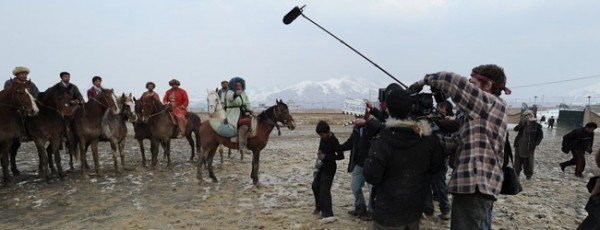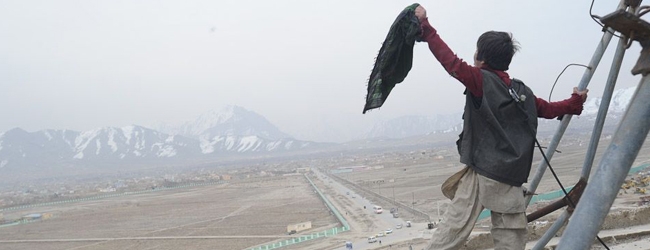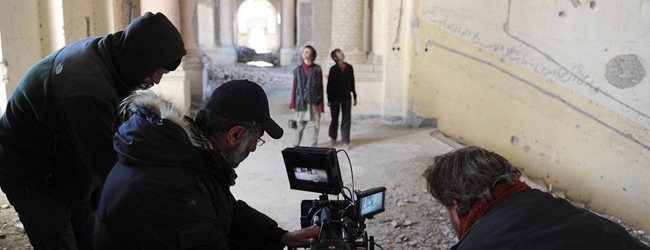Oscar-nominated short Buzkashi Boys films on location in Afghanistan
Short film Buzkashi Boys shot on location in Afghanistan and its tale of life in the capital Kabul secured it an Oscar nomination. It's set against a backdrop of the Afghan national sport buzkashi, a version of horse polo played with a dead goat.
The 30-minute film was directed by Sam French, a Pennsylvania native who moved to Afghanistan in 2008, and the producer was Ariel Nasr, an Afghan-Canadian. Setting up the film in Kabul took around a year, but Nasr used existing connections he had through previous productions such as his documentary The Boxing Girls of Kabul.
Afghanistan has a New Zealand-like variety when it comes to landscapes. There are snow-capped peaks, green hills and crystal-clear lakes.
Ariel Nasr, Producer
“I already had government connections and I’m an Afghan citizen,” Nasr explains: “When you’re working on a film in Afghanistan you can either try to go around the local bureaucracy or you can work through it and build stronger relationships that benefit your work in the long-term.”
Buzkashi Boys’ development came about through a Non Government Organisation (NGO) called Afghan Film Project that was set up to help develop the national film industry. The country in fact already had a national film commission – Afghan Film – and they eventually worked together when the commission saw that the NGO wasn’t competing with them for international funds.
 Government connections helped the Buzkashi Boys production team address regional security issues as they filmed. Parts of the country are still war zones and the Taliban vehemently opposes filmmaking as an art form.
Government connections helped the Buzkashi Boys production team address regional security issues as they filmed. Parts of the country are still war zones and the Taliban vehemently opposes filmmaking as an art form.
“We considered hiring a private security team but they were all very expensive, plus at this time the government was cracking down a bit on the activities of private contractors,” Nasr says. He reveals they found a better alternative: “We got the support of the Ministry of Culture and that led to support from the Department of the Interior.
“In the end we got the official protection of the Afghani police and had officers with us the whole time. All they asked was that we pay their fuel and food expenses. It was a much better set up than having a Western private security team standing around with assault rifles – it was more subtle.”
Wider security precautions involved keeping the filming schedule under wraps and occasionally making last-minute changes, although shooting alterations were often more to do with basic logistical requirements. Kabul’s urban landscape was in a constant state of flux so changes and redevelopments had to be monitored for the sake of continuity.

“If you run into difficulties in Afghanistan,” Nasr adds, “it’s more likely to be because of bad relationships with people or misunderstandings. I don’t think we were ever on the Taliban’s radar.”
Afghanistan has a basic film industry, mostly geared for the DVD market. Nasr and French were able to source a lot of “good, stainless steel equipment” locally, including a crane and accompanying crew that “gets all the work in Afghanistan” for local rates of a few hundred dollars a day.

Nasr believes that Afghanistan has real potential as an international filming location. He concedes that much depends on the country’s political stability and says that this has as much to do with regional power tussles as it does with international intervention.
“Afghanistan has a New Zealand-like variety when it comes to landscapes,” Nasr concludes: “There are snow-capped peaks, green hills and crystal-clear lakes; it has everything you could want as a filmmaker.”
Buzkashi Boys behind-the-scenes stills courtesy of David Gill.
Related Posts
- Kandahar Break doubles Pakistan and Tunisia for Afghanistan
- Scouting in Paradise: The beautiful, hidden and untapped locations of French Polynesia
- Filming on location in Jackson Hole with Location Manager Ian Gersten
- On location with Michael Brook, Manager of Screen Auckland
- A turning point for the Maltese film industry
- Clint Eastwood recreates Afghanistan in California filming American Sniper movie
- Scouting in Western Norway: Where high-tech structures meet epic natural landscapes
- Filming on location in Colombia with the Colombian Film Commission
Related posts:
Comments
Not Logged in
You must be logged in to post a comment






There are no comments